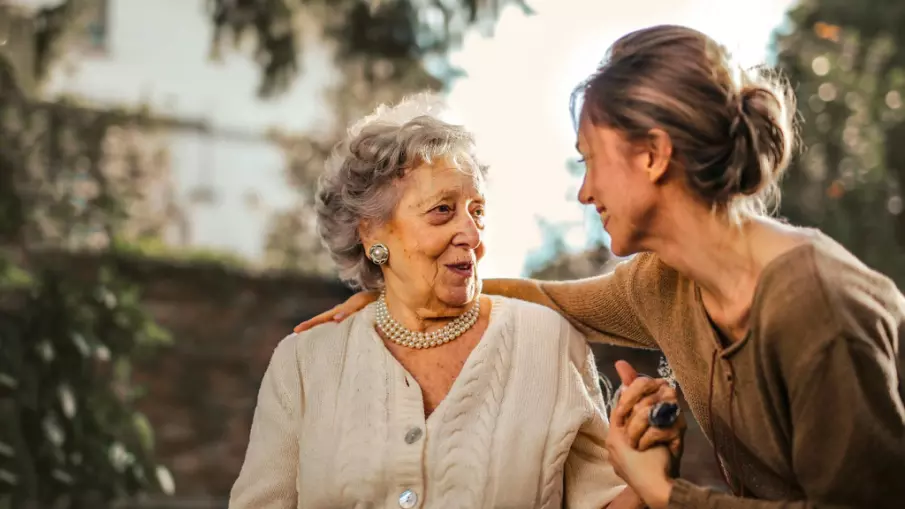How to Combat Senior Isolation with Video Calling and Interactive TV

Photo by Andrea Piacquadio:
Isolation is a significant issue facing many seniors today, often leading to feelings of loneliness, depression, and decreased overall well-being.
Many seniors experience loneliness due to various factors, such as reduced mobility, loss of loved ones, and geographical distance from family and friends. This isolation can lead to serious health issues, including depression, anxiety, and cognitive decline. However, advancements in technology offer promising solutions to mitigate these challenges.
Video calling and interactive TV are two innovative tools that can help bridge the gap, providing essential social connections and engaging activities. These technologies not only enhance communication but also offer a wide range of interactive content that can keep seniors mentally and emotionally stimulated.
In this article, we will explore how video calling and interactive TV can combat senior isolation, improve well-being, and foster a more connected and fulfilling life for older adults.
The Impact of Isolation on Seniors
When older adults lack social interaction, they are more susceptible to a range of negative health outcomes. Prolonged isolation can lead to depression, characterized by persistent sadness, loss of interest in activities, and decreased energy levels.
- Anxiety is another common issue, with seniors experiencing excessive worry, restlessness, and feelings of impending doom.
- Cognitive decline is also a significant concern. Social engagement plays a crucial role in maintaining cognitive function, and isolation can accelerate memory loss and decrease the ability to think clearly. Studies have shown that seniors who are socially isolated are at a higher risk of developing conditions such as Alzheimer's disease and other forms of dementia.
- Physical health is equally impacted by isolation. Seniors who feel lonely or isolated are less likely to engage in physical activities, which are essential for maintaining mobility, strength, and overall health. Lack of exercise can lead to various health problems, including obesity, heart disease, and diabetes. Furthermore, isolated seniors often have poorer diets and are less likely to follow medical advice, leading to a decline in their physical well-being.
- Increased mortality rates among isolated seniors highlight the critical need for interventions. Social isolation has been linked to a higher risk of premature death, comparable to the risks associated with smoking, obesity, and lack of physical activity.
Combating isolation is essential to improve the quality of life for seniors, and technology can play a crucial role in this effort.
Modern advancements such as video calling and interactive TV provide innovative ways to keep seniors connected and engaged.
These technologies can facilitate regular communication with family and friends, offer virtual social activities, and provide access to a wide array of stimulating content.
Benefits of Video Calling for Seniors
1. Maintaining Family Connections
Video calling platforms allow seniors to maintain regular contact with family members and friends, regardless of distance. Seeing loved ones' faces and engaging in real-time conversations can significantly reduce feelings of loneliness.
2. Enhanced Social Interaction
Video calls provide a more personal and engaging form of communication compared to phone calls or text messages. The ability to see facial expressions and body language enhances the quality of interactions, making conversations more meaningful.
3. Participating in Social Activities
Many communities and organizations offer virtual events, such as book clubs, exercise classes, and social gatherings, specifically designed for seniors. Video calling enables participation in these activities, fostering a sense of community and belonging.
Choosing the Right Video Calling Platform
When selecting a video calling platform for seniors, ease of use is paramount. Platforms with simple interfaces, large buttons, and minimal setup are ideal. Some of the best options include:
- Zoom: Widely used and offers features like virtual backgrounds and breakout rooms for group activities.
- Skype: User-friendly and provides free video calling with screen sharing options.
- FaceTime: Perfect for seniors using Apple devices, offering seamless integration with their gadgets.
- WhatsApp: Popular for its simplicity and ability to make video calls via smartphones.
Benefits of Interactive TV for Seniors
1. Engaging Content
Interactive TV offers a variety of content that can be tailored to seniors' interests. From educational programs to entertainment, interactive TV keeps seniors engaged and mentally stimulated.
2. Cognitive Stimulation
Many interactive TV platforms include games and puzzles that challenge the mind and help maintain cognitive function. These activities can be both fun and beneficial for mental health.
3. Access to Virtual Services
Interactive TV can provide access to virtual health consultations, therapy sessions, and fitness programs. This makes it easier for seniors to manage their health and well-being from home.
Implementing Interactive TV in Seniors' Lives
1. Selecting the Right Device
Choose a smart TV or a streaming device that offers a range of interactive content. Devices like Amazon Fire Stick, Apple TV, or Roku are excellent choices.
2. Setting Up User-Friendly Interfaces
Ensure the interface is set up to be user-friendly. Simplify the home screen, use large icons, and create shortcuts to favorite apps and services to make navigation easier for seniors.
3. Introducing Educational Programs
Encourage seniors to explore educational programs on topics they are passionate about. Platforms like YouTube and various streaming services offer documentaries and instructional videos that can be both informative and entertaining.
Combining Video Calling and Interactive TV
Using both video calling and interactive TV can provide a comprehensive solution to combat senior isolation. Here are some tips on how to combine these technologies effectively:
1. Scheduled Virtual Family Nights
Organize regular virtual family gatherings where seniors can catch up with relatives, play games, or watch a movie together and stay connected with Jubilee TV Direct.
2. Virtual Group Activities
Encourage seniors to join virtual exercise classes, book clubs, or hobby groups. These activities can be accessed through interactive TV and facilitated by video calls for a more interactive experience.
3. Health and Wellness Programs
Leverage interactive TV for health and wellness programs and use video calling for virtual consultations with healthcare providers. This dual approach ensures comprehensive support for seniors' physical and mental health.
Conclusion
Combatting senior isolation requires a multifaceted approach, and video calling and interactive TV offer valuable tools to achieve this goal. By facilitating social connections, providing engaging content, and ensuring access to essential services, these technologies can significantly enhance the quality of life for seniors.
Implementing these solutions thoughtfully can help reduce feelings of loneliness and foster a more connected and fulfilling life for our aging population.
More to Read:
Previous Posts:
Next Posts:




